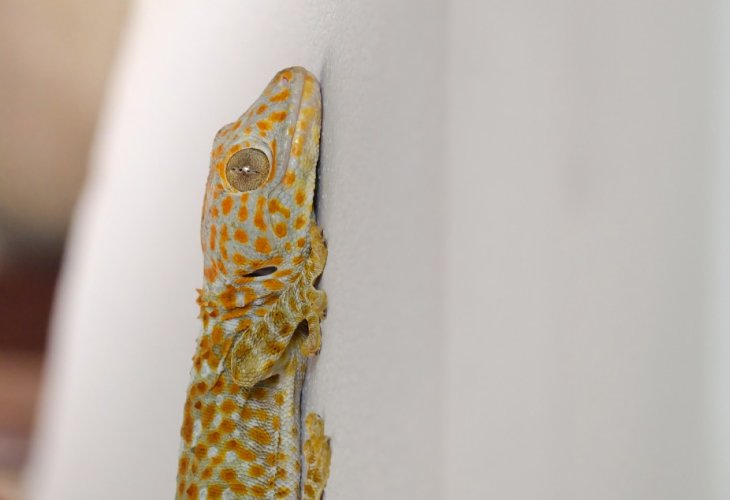Wonders of Creation
The Curious Case of the House Gecko: Nature's Tiny Climber
Discover the fascinating life of the house gecko, its unique climbing skills, and its reputation for bringing good luck. Plus, practical tips on how to keep these little lizards out of your home.
 (Photo: shutterstock)
(Photo: shutterstock)The gecko family comprises various species of small lizards, mostly found in warm regions.
In Israel, the most common gecko is the house gecko, known for dwelling in residential areas, often taking up residence inside homes and apartments.
The house gecko has soft, semi-transparent skin, covered in scales, and appears in various colors. An average house gecko lives around 9 years and typically grows to about 14 cm in length. It primarily feeds on small insects like mosquitoes, tiny moths, and the like.
This intriguing creature can effortlessly scale vertical surfaces and even walk upside down on ceilings. This ability is due to special adhesive pads on its feet, which contain microscopic hair-like structures that act like hooks. These structures latch onto tiny imperfections or crevices on the surfaces it climbs, allowing the gecko to secure itself without falling, even when inverted.
An interesting fact: the adhesive pads on a gecko's feet inspired the development of various strong adhesives.
Another fascinating trait is its tail's ability to detach easily. This serves to deter and confuse predators; when a threat grabs the tail, it detaches and continues to move, distracting the predator while the gecko escapes. The gecko can eventually regrow its tail. This remarkable ability stems from a unique nervous system: unlike humans, whose nervous systems originate in the brain, geckos, and other lizards have a distributed nervous system throughout their bodies, similar to worms. If a worm is cut in two, both halves continue to move independently for a time. The same phenomenon occurs with a gecko's tail, even after detachment.
Rebbetzin Esther Toledano - Lessons from the Frog and the Dog
House geckos have excellent night vision and are indeed active at night.
House geckos lay eggs several times a year, attaching them under stones, tree bark, or within rock crevices. Typically, two eggs are laid at a time, and the young geckos emerge fully independent after two months.
There's a common belief that geckos bring wealth or generally signify good fortune, advising against their removal from homes. However, this notion isn't rooted in tradition. If you have a gecko at home, you can safely remove it without concern—but how?
How to Keep Geckos Out of Your Home?
It's essential to know that house geckos are a protected species and cannot be exterminated by law. Therefore, there are alternative methods for keeping geckos away.
One way is to cool the house. Geckos seek warm, sheltered places, and if you set your air conditioner to a relatively low temperature, they will steer clear. Of course, this is only a temporary solution, as you likely won't run your AC 24/7.
If just one gecko enters your home and you're not afraid, you can simply pick it up and set it outside. It will quickly search for a new home. There's nothing to fear, as geckos are not dangerous—they don't bite and aren't poisonous.
For multiple geckos frequently entering the home, consider dabbing a little essential oil in corners of the house or room, such as peppermint, lavender, lemon verbena, lemongrass, geranium, thyme, oregano, or basil. The scent (which also adds a pleasant atmosphere to your room) keeps geckos away.
Shabbat Halacha - Catching a Cockroach or Lizard

